|
|
Post by anansi on Apr 14, 2010 0:09:05 GMT -5
This thread is about paying homage to The arts & architecture of Africa and those in the Diaspora . The AshantiAshanti Empire/ Asante Kingdom (18th to late 19th century) Back to Online Encyclopedia Index Map of Ashanti Empire The Ashanti Empire was a pre-colonial West African state that emerged in the 17th century in what is now Ghana. The Ashanti or Asante were an ethnic subgroup of the Akan-speaking people, and were comprised of small chiefdoms. The Ashanti established their state around Kumasi in the late 1600s, shortly after their first encounter with Europeans. In some ways the Empire grew out of the wars and dislocations caused by Europeans who sought the famous gold deposits which gave this region its name, the Gold Coast. During this era the Portuguese were the most active Europeans in West Africa. They made Ashanti a significant trading partner, providing wealth and weapons which allowed the small state to grow stronger than its neighbors. Nonetheless when the 18th Century began Ashanti was simply one of Akan-speaking Portuguese trading partners in the region. That situation changed when Osei Tutu, the Asantehene (paramount chief) of Ashanti from 1701 to 1717, and his priest Komfo Anokye, unified the independent chiefdoms into the most powerful political and military state in the coastal region. The Asantehene organized the Asante union, an alliance of Akan-speaking people who were now loyal to his central authority. The Asantehene made Kumasi the capital of the new empire. He also created a constitution, reorganized and centralized the military, and created a new cultural festival, Odwira, which symbolized the new union. Most importantly, he created the Golden Stool, which he argued represented the ancestors of all the Ashanti. Upon that Stool Osei Tutu legitimized his rule and that of the royal dynasty that followed him.         Gold was the major product of the Ashanti Empire. Osei Tutu made the gold mines royal possessions. He also made gold dust the circulating currency in the empire. Gold dust was frequently accumulated by Asante citizens, particularly by the evolving wealthy merchant class. However even relatively poor subjects used gold dust as ornamentation on their clothing and other possessions. Larger gold ornaments owned by the royal family and the wealthy were far more valuable. Periodically they were melted down and fashioned into new patterns of display in jewelry and statuary. www.blackpast.org/.../tutu-osei-kofi-c-1680-1717.     Ashanti ceremonial sword Ashanti ceremonial sword 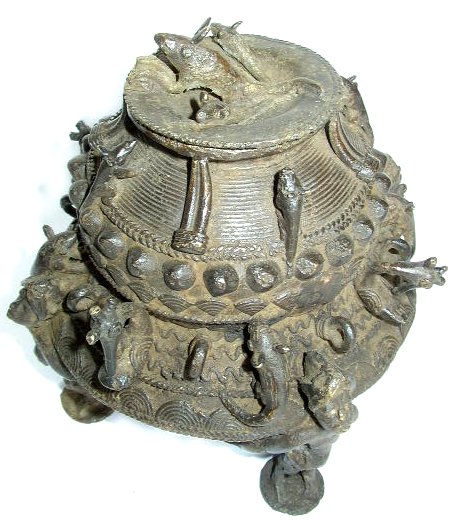 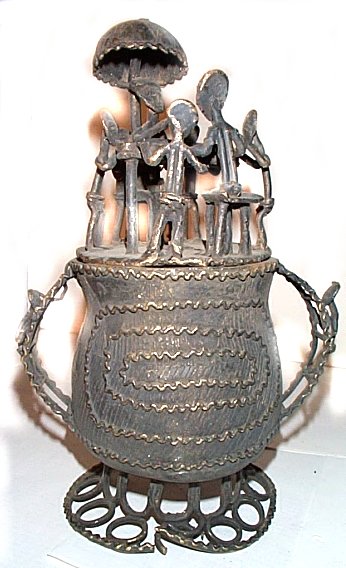 Bronze vessels Bronze vessels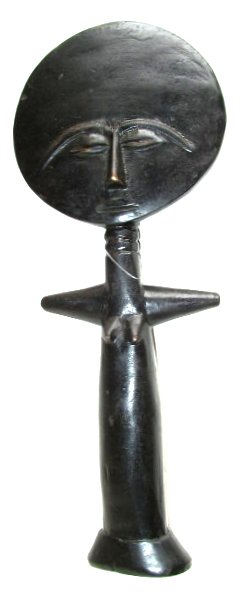  The art of Ashanti can be classified into two main groups: metalwork (casts of brass or gold using a lost-wax method and objects made of hammered metal sheets) and woodcarvings. Fertility and children are the most frequent themes in the wooden sculptures of the Asante. Thus the most numerous works are akua’ba fertility figures and mother-and-child figures called Esi Mansa. The acua’ba are dolls with disk-shaped heads embodying their concept of beauty and carried by women who want to become pregnant and to deliver a beautiful child. The fame of these objects derives from a legend asserting that a woman who has worn one will give birth to a particularly beautiful daughter. A Ghanaian source indicates another use: when a child disappeared, the acua’ba statue was placed with food and silver coins at the edge of the forest to attract the malevolent spirit responsible: the spirit would then exchange the child for the statue. Sculptured mother-and-child figures show the mother nursing or holding her breast. Such gestures express Asante ideas about nurturing, the family, and the continuity of a matrilineage through a daughter or of a state through a son. The mother-and-child figures are kept in royal and commoner shrines where they emphasize the importance of the family and lineage. The Asante are famous for their ceremonial stools carved with an arched sit set over a foot, referring to a proverb or a symbol of wisdom. They are usually made for a chief when he takes office and are adorned with beads or copper nails and sheets. In rare cases, when the chief is sufficiently important, the stool is placed in a special room following his death to commemorate his memory. Ashanti chairs are based on 17th-century European models and, unlike stools; do not have any spiritual function. They are used as prestige objects by important chiefs during festivities or significant gatherings. www.zyama.com/asante/pics..htm Kenti clothAsante omanhene (paramount chief) at a durbar. Kenti clothAsante omanhene (paramount chief) at a durbar.
Kumasi, Ashanti. January 19, 1980.
Photo by R.A. Silverman
|
|
|
|
Post by homeylu on Apr 14, 2010 1:46:04 GMT -5
Very nice, I have some more art I will post later.
|
|
|
|
Post by anansi on Apr 14, 2010 2:46:38 GMT -5
Igodomigodo City Ramparts and MoatsOgiso ("Rulers of the Sky") , who may have numbered as many as thirty-one kings, ruling the kingdom of Benin between 900 - 1170 AD, which is the earliest period so far accounted for in Benin history (Plankensteine 2007). The first ruler, according to Benin traditions, was Igodo, a prominent elder in his community (Odionwere) who exercised authority over all other elders (Edionwere). Igodo is said to have ruled all the various small communities which collectively formed the kingdom known as 'Igodomigodo', meaning 'land of Igodo' or 'town of towns'. The most prominent among the known Ogiso rulers are Igodo, Ere, Orire, Oriagba and Owodo. The kingdom began as a union of juxtaposed clusters of independent communities, each surrounded by a moat (Egharevba 1968). Fortification of Benin City The defensive fortification of Benin City, the capital, consisted of ramparts and moats, call iya, enclosing a 4000 square kilometer (2485.5 miles) of community lands. In total, the Benin wall system encompasses over 10,000 kilometres (6213.7 miles) of earth boundaries. Patrick Darling, an archaeologist, estimates that the complex was built between 800 and 1000 up to the late fifteenth century (Keys 1994: 16). Advantageously situated, the moats were duged in such a manner that earthen banks provided outer walls that complemented deep ditches. According to Graham Connah, the ditch formed an integral part of the intended barrier but was also a quarry for the material to construct the wall or bank (Keys 1994: 594). The ramparts range in size from shallow traces to the immense 20-meter-high rampart (66 feet) around Benin City (Wesler 1998: 144). The Guinness Book of World Records describes the walls of Benin City as the world's second largest man-made structure after China's Great Wall), in terms of length, and the series of earthen ramparts as the most extensive earthwork in the world. wysinger.homestead.com/ogiso.html  House of a Chief House of a Chief  The Palace of King Gbehanzin The Palace of King Gbehanzin    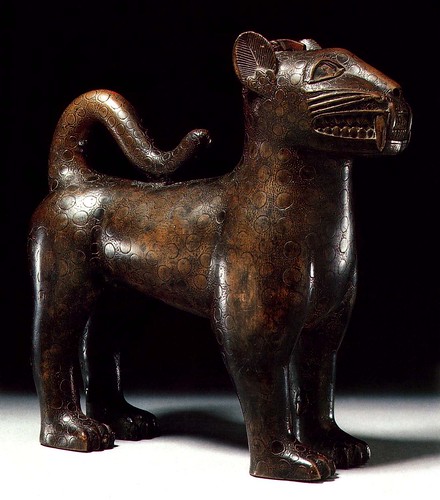   ![]() [/imhttp://www.donstinson.com/scatt/artistsonline/BeninBronze.jpgg]   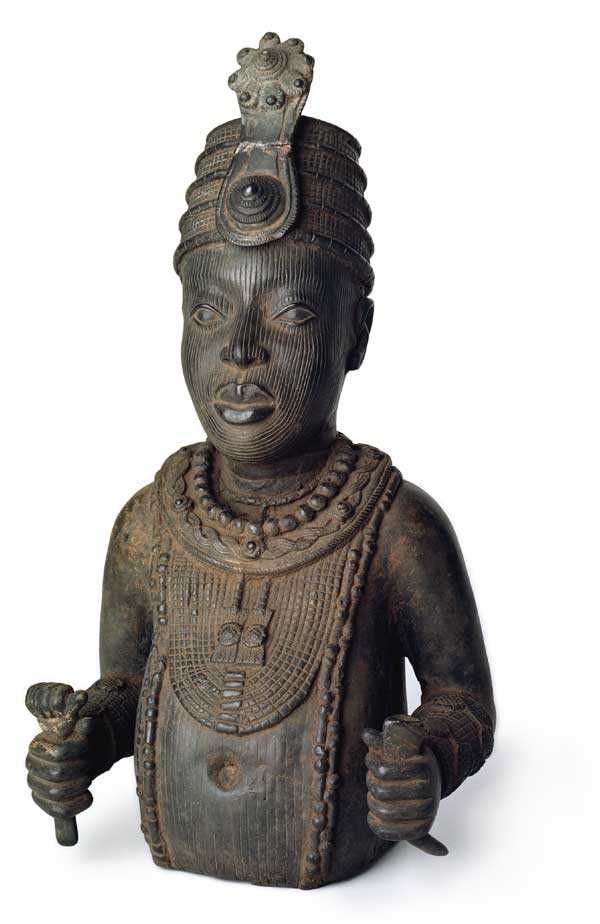
|
|
jari
Scribe
 
Posts: 289
|
Post by jari on Apr 14, 2010 11:12:37 GMT -5
Oh I found some great pics of the palaces of the Obas but they are too big to post and I don"t know how to reduce the size..  Upload using flickr |
|
|
|
Post by anansi on Apr 14, 2010 22:36:22 GMT -5
Oh I found some great pics of the palaces of the Obas but they are too big to post and I don"t know how to reduce the size..  Upload using flickr Thanks Jeri will give it a shot..   Ghezo's Palace Ghezo's Palace  Benin Royal wives traditional wear Benin Royal wives traditional wear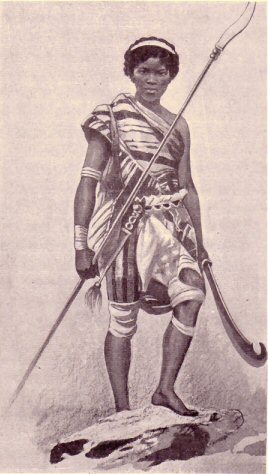  The famous Amazons The famous Amazons |
|
|
|
Post by anansi on Apr 14, 2010 23:55:00 GMT -5
The Yoruba The Oduduwa Dynasty and the Founding of the Nation. Oduduwa is the legendary progenitor of the Yoruba. There are two variants of the story of how he achieved this feat. The first is cosmogonic, the second, political. The cosmogonic version also has two variants. According to the first variant of the cosmogonic myth, Orisanla (Obatala) was the arch-divinity who was chosen by Olodumare, the supreme deity to create a solid land out of the primordial water that constituted the earth and of populating the land with human beings. He descended from heaven on a chain, carrying a small snail shell full of earth, palm kernels and a five-toed chicken. He was to empty the content of the snail shell on the water after placing some pieces of iron on it, and then to place the chicken on the earth to spread it over the primordial water. According to the first version of the story, Obatala completed this task to the satisfaction of Olodumare. He was then given the task of making the physical body of human beings after which Olodumare would give them the breath of life. He also completed this task and this is why he has the title of "obarisa" the king of orisas. The other variant of the cosmogonic myth does not credit Obatala with the completion of the task. While it concedes that Obatala was given the task, it avers that Obatala got drunk even before he got to the earth and he was unable to do the job. Olodumare got worried when he did not return on time, and he had to send Oduduwa to find out what was going on. When Oduduwa found Obatala drunk, he simply took over the task and completed it. He created land. The spot on which he landed from heaven and which he redeemed from water to become land is called Ile-Ife and is now considered the sacred and spiritual home of the Yoruba. Obatala was embarrassed when he woke up and, due to this experience, he made it a taboo for any of his devotees to drink palm wine. Olodumare forgave him and gave him the responsibility of molding the physical bodies of human beings. The making of land is a symbolic reference to the founding of the Yoruba kingdoms, and this is why Oduduwa is credited with that achievement . www.yorubanation.org/Yoruba.htmRead more^    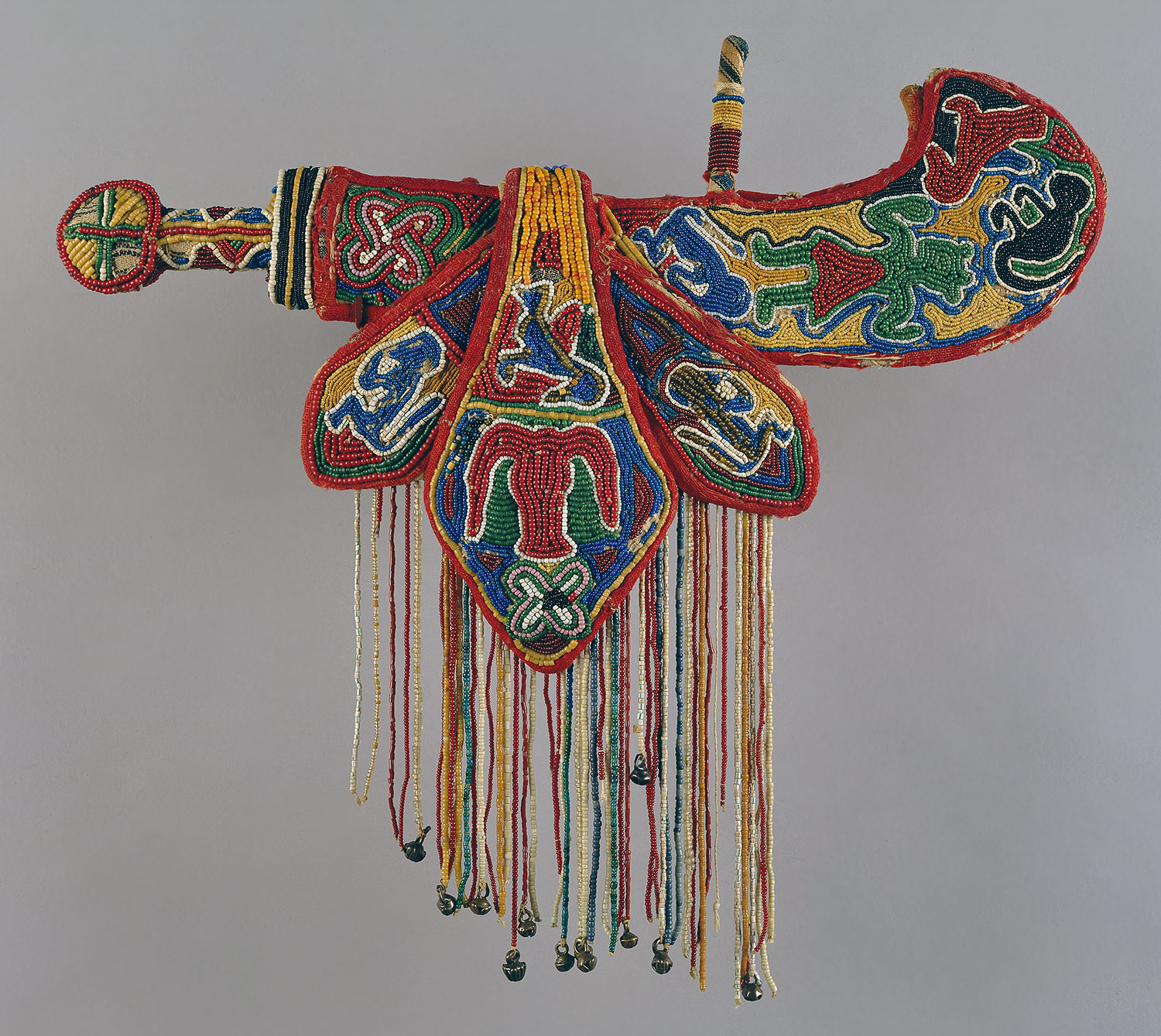 Sword with beaded scabbard Sword with beaded scabbard  Origin: Yoruba/ nigeria/ Africa Origin: Yoruba/ nigeria/ Africa
Date: 18 th Century AD to 19 th Century AD  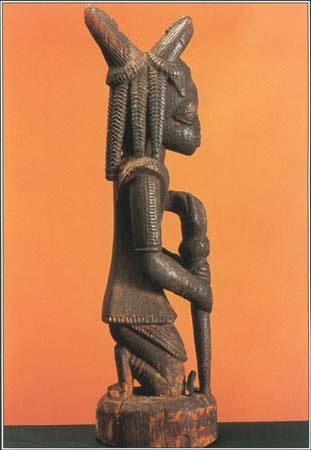 This carved wood sculpture shows Eshu, the trickster god of the Yoruba people of Nigeria in West Africa. This carved wood sculpture shows Eshu, the trickster god of the Yoruba people of Nigeria in West Africa.
order and disorder are forever paired, and neither can exist without the other.
Read more: Eshu - Myth Encyclopedia - mythology, god, story, names, people, African www.mythencyclopedia.com/Dr-Fi/Eshu.html#ixzz0l8lrgPAS
[imghttp://www.randafricanart.com/sitebuilder/images/Yoruba_offering_bowl_Sothebys_2001_lot95-498x600.jpg] [/img]  
|
|
|
|
Post by anansi on Apr 15, 2010 22:34:49 GMT -5
The Nok culture appeared in Nigeria around 1000 B.C. and mysteriously vanished around 200 AD in the region of West Africa. This region lies in Central Nigeria. The culture’s social system is thought to have been highly advanced. The Nok culture was considered to be the earliest sub-Saharan producer of life-sized Terracotta. Nok culture terracottas are heralded as the prime evidence of the refinement of African civilizations, and it is suggested that the society eventually evolved into the later Ife Yoruba community. The population was about 2000-4000 people.
The refinement of this culture is attested to by the image of a Nok dignitary at the Minneapolis Institute of Arts. The dignitary is portrayed wearing a "shepherds crook" affixed with an elastic material to the right arm The dignitary is also portrayed sitting with flared nostrils, and an open mouth suggesting performance. According to some accounts, based on artistic similarities between early Yoruba art forms and Nok forms, there may be connections between Nok culture and contemporary Jos Plateau people. Later brass and terracotta sculptures of the Ife and Benin cultures show significant similarities with those found at Nok.
Iron use, in smelting and forging for tools, appears in Nok culture in Africa by 500 BC.[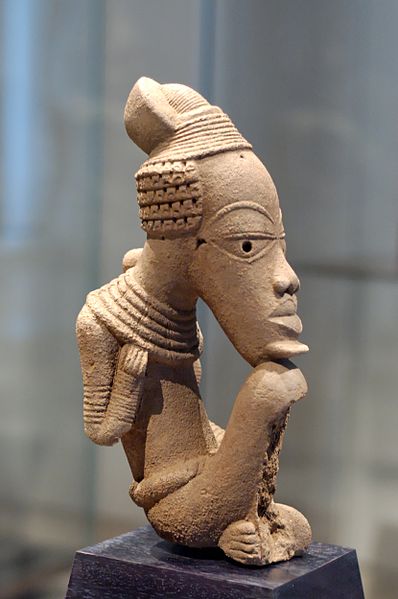       Excavation of a furnace of the Nok Culture Excavation of a furnace of the Nok Culture
The Nok Culture of Central Nigeria represents the earliest sculptural art of sub saharan Africa as well as the beginnings of iron metallurgy. Since 2005 a joint research project of the University of Frankfurt, the National Commission for Museums and Monuments and the University of Jos are dedicated to the Nok Culture.images.google.com/imgres?imgurl=http:900 B.C~
|
|
|
|
Post by anansi on Apr 15, 2010 23:52:19 GMT -5
Mali 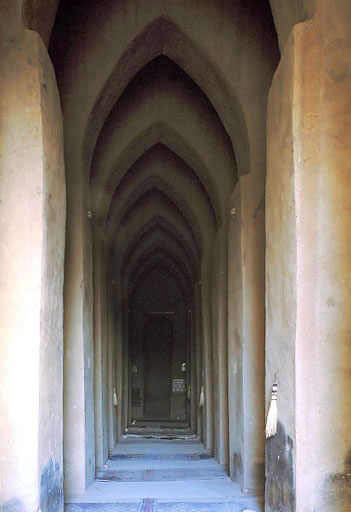 The interior The interiorDjenné, the oldest known city in sub-Saharan Africa is situated on the floodlands of the Niger and Bani rivers, 354 kilometers (220 miles) southwest of Timbuktu. Founded by merchants around 800 AD (near the site of an older city dating from 250BC), Djenné flourished as a meeting place for traders from the deserts of Sudan and the tropical forests of Guinea. Captured by the Songhai emperor Sonni 'Ali in 1468, it developed into Mali's most important trading center during the 16th century. The city thrived because of its direct connection by river with Timbuktu and from its situation at the head of trade routes leading to gold and salt mines. Between 1591 and 1780, Djenné was controlled by Moroccan kings and during these years its markets further expanded, featuring products from throughout the vast regions of North and Central Africa. In 1861 the city was conquered by the Tukulor emperor al-Hajj 'Umar and was then occupied by the French in 1893. Thereafter, its commercial functions were taken over by the town of Mopti, which is situated at the confluence of the Niger and Bani rivers, 90 kilometers to the northeast. Djenné is now an agricultural trade center, of diminished importance, with several beautiful examples of Muslim architecture, including its Great Mosque. In addition to its commercial importance, Djenné, was also known as a center of Islamic learning and pilgrimage, attracting students and pilgrims from all over West Africa. Its Great Mosque dominates the large market square of Djenné. Tradition has it that the first mosque was built in 1240 by the sultan Koi Kunboro, who converted to Islam and turned his palace into a mosque. Very little is known about the appearance of the first mosque, but it was considered too sumptuous by Sheikh Amadou, the ruler of Djenné in the early nineteenth century. www.sacredsites.com/africa/mali/djenne.htmlMany of us think of Mali as having unique architecture..but they also had at-least in their pre-Islamic phases.. Sculptures Scientists in France are reporting for the first time that sculptors from the fantastically wealthy ancient Empire of Mali—once the source of almost half the world’s gold—used blood to form the beautiful patina, or coating, on their works of art. Scientists in France are reporting for the first time that sculptors from the fantastically wealthy ancient Empire of Mali—once the source of almost half the world’s gold—used blood to form the beautiful patina, or coating, on their works of art.   A stately long-necked terracotta bird from the ancient Bankoni culture of Mali. This bird measures 15” high by 7” wide and has cross-hatched incised lines on its bulbous body. 12th to 16th century. www.zkta.com/african-tribal-art/african_triba A stately long-necked terracotta bird from the ancient Bankoni culture of Mali. This bird measures 15” high by 7” wide and has cross-hatched incised lines on its bulbous body. 12th to 16th century. www.zkta.com/african-tribal-art/african_triba...  Djenne [View map] figurine from West Africa [View map] (ca. 1450 AD) Djenne [View map] figurine from West Africa [View map] (ca. 1450 AD) An archaic equestrian statue from Mali, Bronze, An archaic equestrian statue from Mali, Bronze,  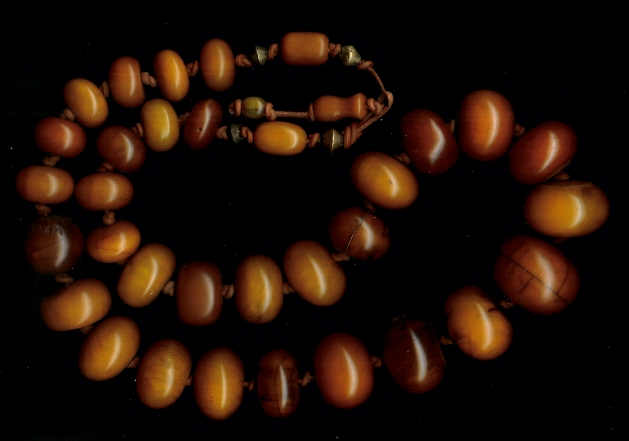 
|
|
|
|
Post by anansi on Apr 17, 2010 1:01:37 GMT -5
 The Kongo The Kongo Many African societies see masks as mediators between the living world and the supernatural world of the dead, ancestors and other entities. Masks became and still become the attribute of a dressed up dancer who gave it life and word at the time of ceremonies. In producing a mask, a sculptor's aim is to depict a person's psychological and moral characteristics, rather than provide a portrait. The sculptor begins by cutting a piece of wood and leaving it to dry in the sun; if it cracks, it cannot be used for a mask. African sculptors see wood as a complex living material and believe each piece can add its own feature to their work. Having made certain the wood is suitable, the sculptor begins, using an azde to carve the main features, a chisel to work on details and a rough leaf to sand the piece. He then paints the mask with pigments such as charcoal (to give a black colour), powders made from vegetable matter or trees (for ochre/earth tones) or mineral powders like clay (to give a white colour). African peoples often symbolize death by the colour white rather than black; at the same time, many African cultures see white as the colour that links them to their ancestors, and it can therefore have a positive meaning.No different from ancient Kemet.^  The Woyo live in the area dominated for centuries by the powerful Kongo Kingdom. Despite this, they have managed to maintain their identity, as well as produce a small but distinctive body of art. Like their Kongo neighbors, there are some large magical figures produced, though these are either rare or misidentified. The most well-known of Woyo arts are the beautiful initiation masks, with their colorfully-painted faces diagonal lines extending downward from expressive eyes. Compared to other masks from the Congo they are rare, but the best of them are debatably the most beautiful of all African masks. The sublime combination of color and solemnity leaves a lasting impression on the viewer. In addition to the famous masks, the Woyo produce decorative pot lids, an art-form unique to the Woyo. Though poorly understood, they are exchanged between husband and wife, as a means of secret communication, a vow of faithfulness perhaps. There are utilitarian objects produced, but these are difficult to distinguish from those of their neighbors the Kongo and Yombe. History: In the 15th century, Queen Nwe led her people, who were to become the Woyo, away from the Congo cataracts, and the confusing and stressful mix of BaKongo groups, into the area in which they currently live. This first "dynasty" was later conquered by the neighboring king of the KiKongo, only to be reborn under the king's sister as the second dynasty, which re-established the Woyo as a distinct people. The Woyo tried to expand their territory northward in the 17th century, only to be pushed back by the Solongo. In the 18th century, the slave trade, disease, and drought gradually diminished their power, leading to an inevitable dissolution of the "monarchy," in favor of a more egalitarian society. www.africadirect.com/other/peoples/peoples.php?people=Woyo  Such knives can be find among many other peoples surrounding the Ngbaka. Among these peoples lineage heads, leaders in the hunt and religious specialists possessed variant types of throwing knives to not only indicate office but in the past these knives have served as weapons. Such knives can be find among many other peoples surrounding the Ngbaka. Among these peoples lineage heads, leaders in the hunt and religious specialists possessed variant types of throwing knives to not only indicate office but in the past these knives have served as weapons.
  www.africadirect.com/products.php?category=5&subcategory=85 www.africadirect.com/products.php?category=5&subcategory=85  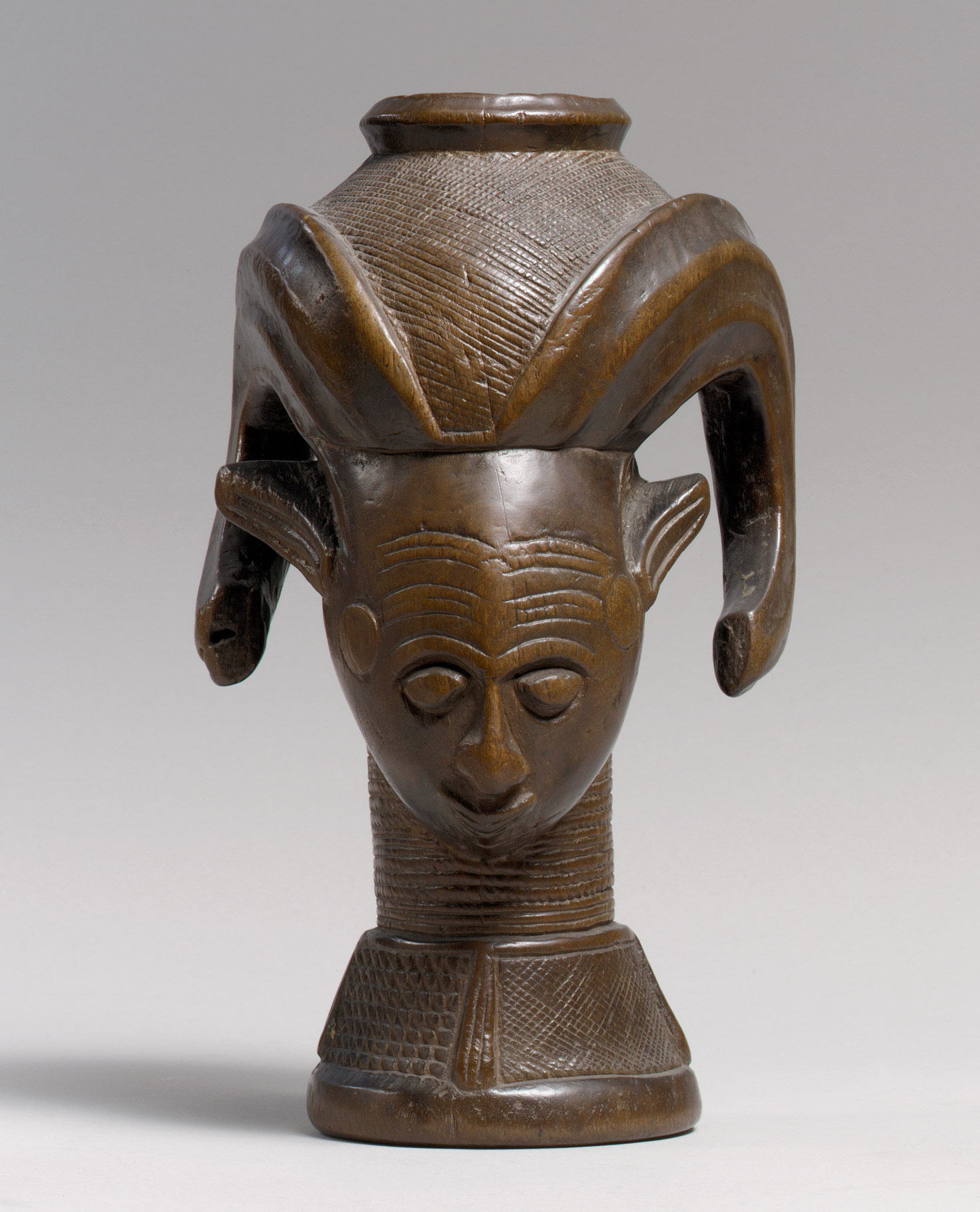 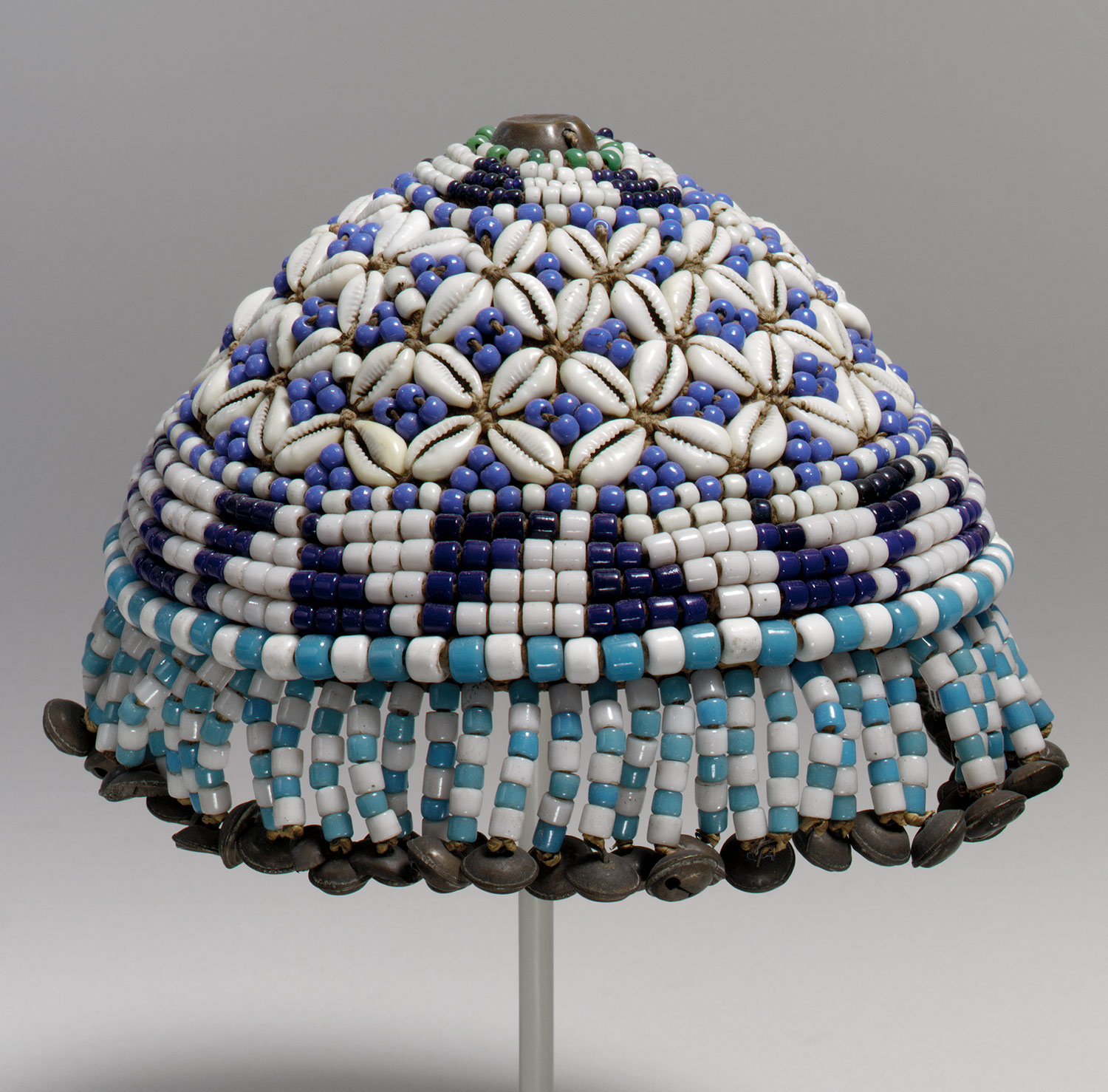 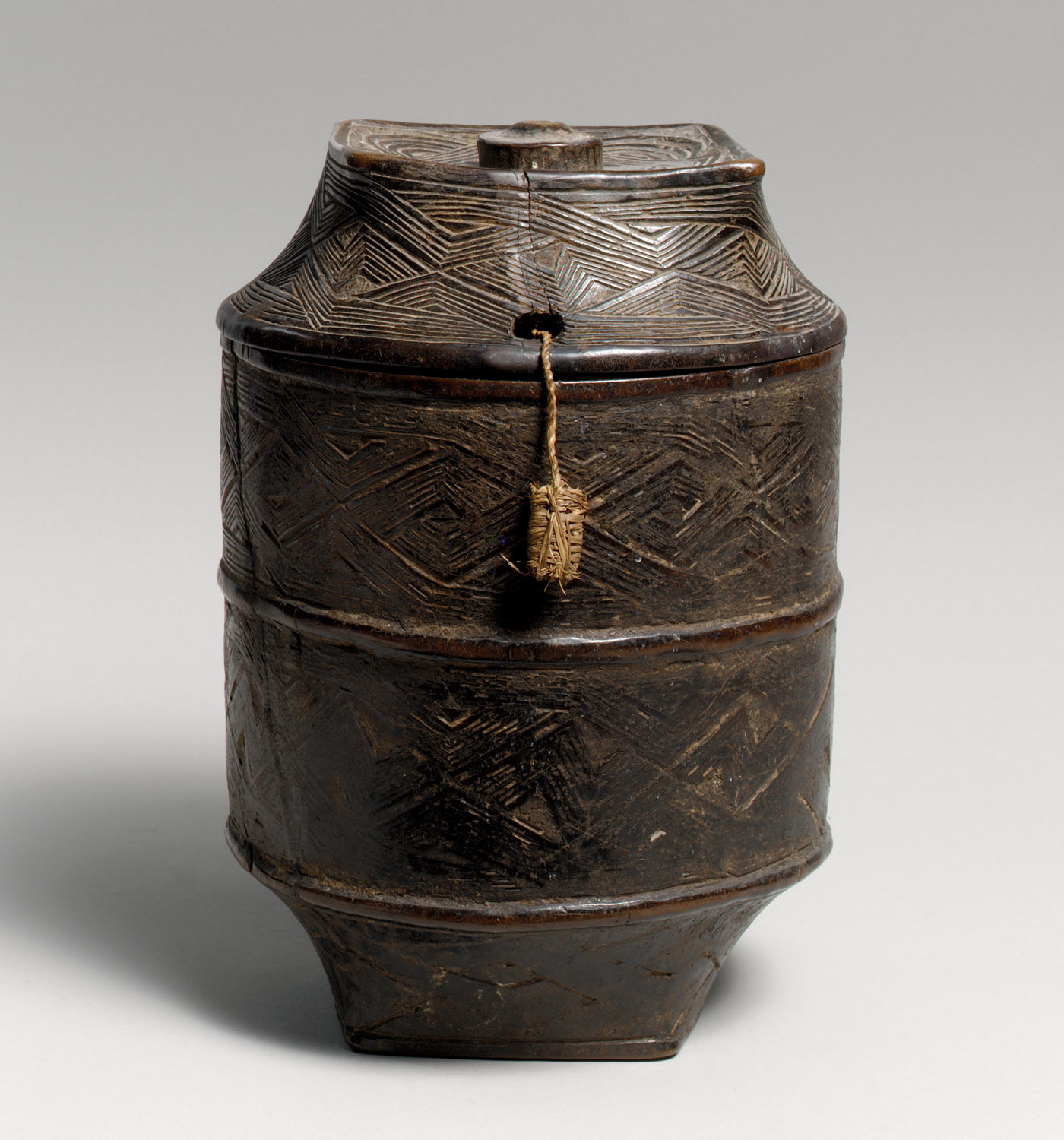 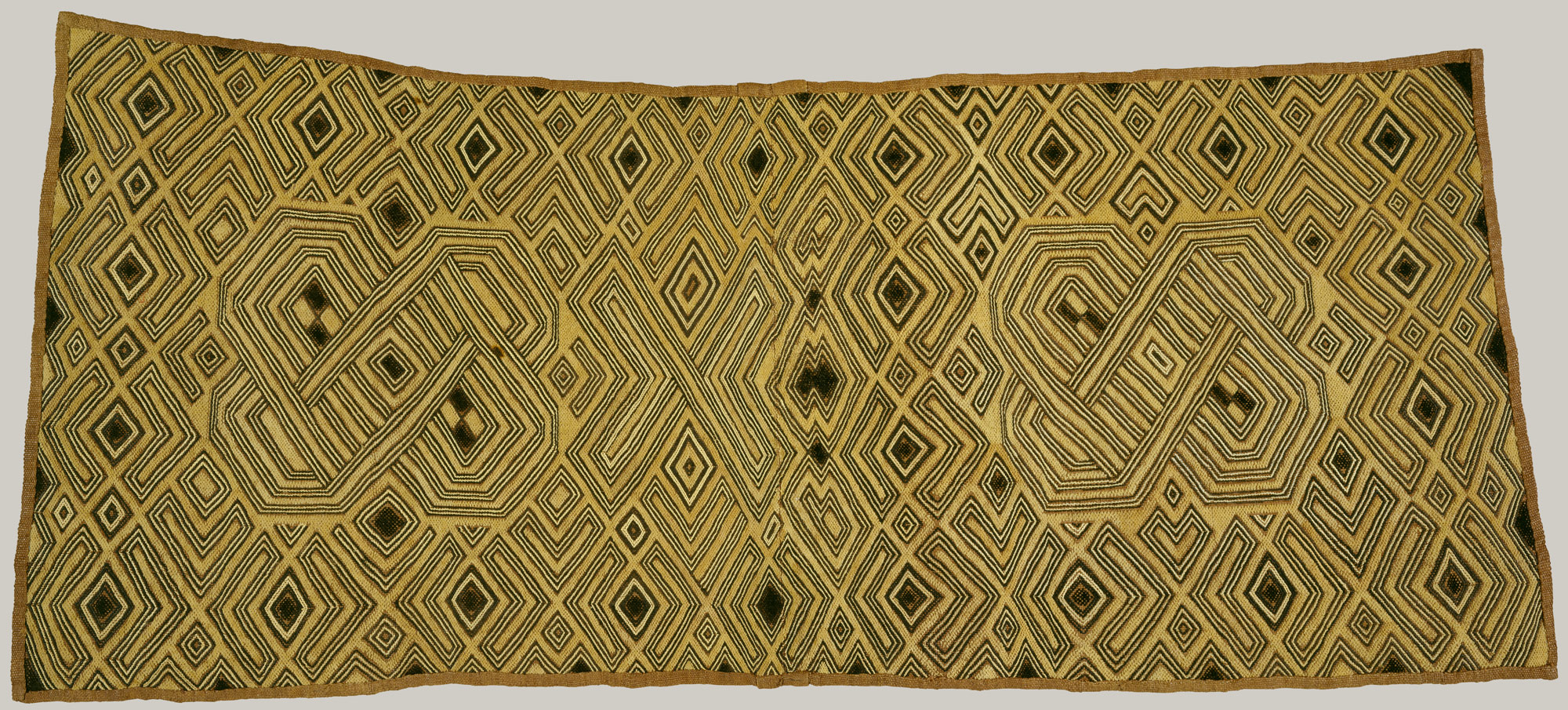 All the above is from the Kuba people Kongo All the above is from the Kuba people Kongo 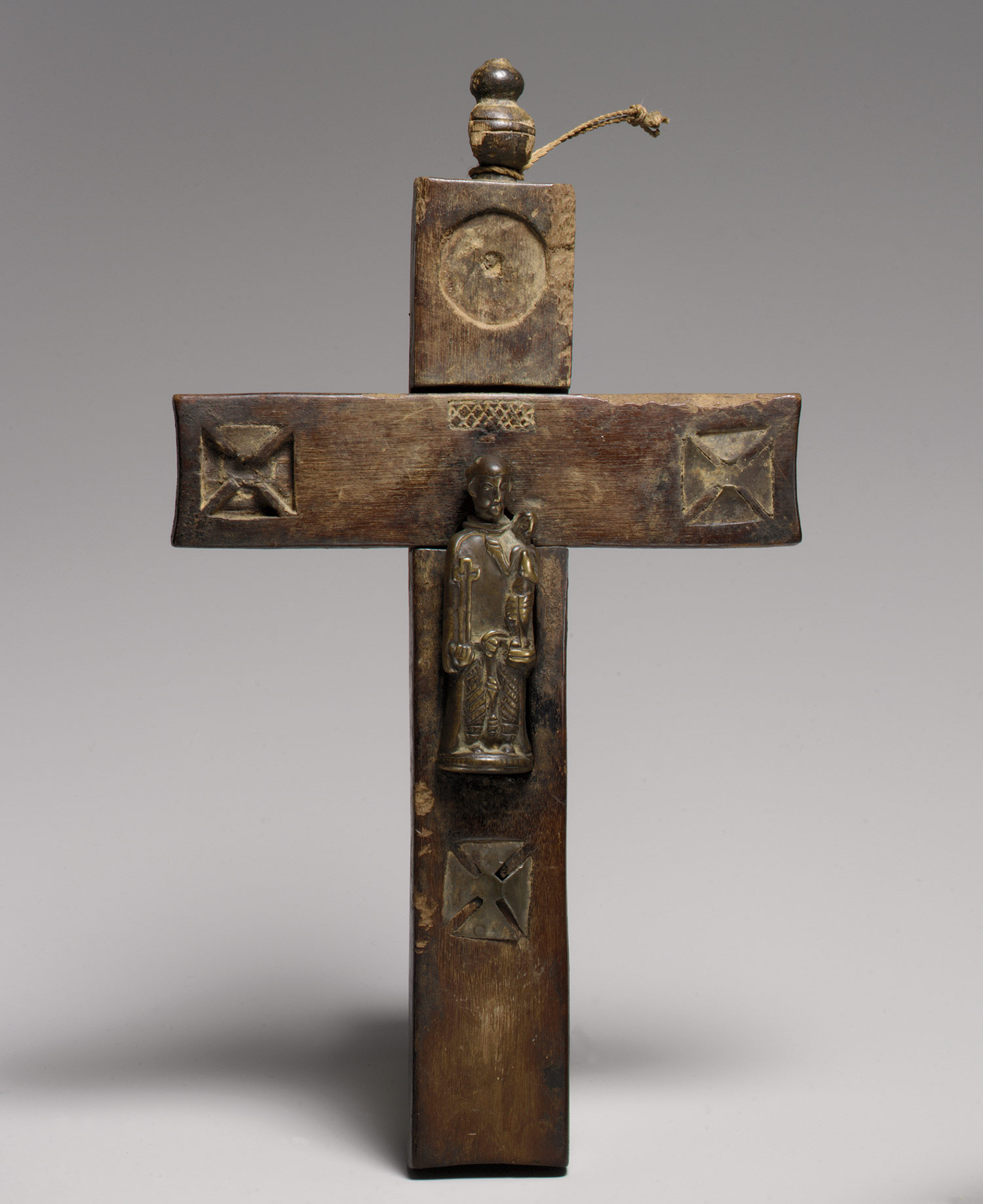 The Kuba Kingdom The Kuba KingdomNestled in the fertile forest and savanna bordered by the Sankuru, Lulua, and Kasai rivers, the Kuba kingdom was a conglomerate of several smaller principalities of various ethnic origins. Sometime around 1625, an outsider unseated a rival ruler and unified the area's chiefdoms under his leadership. This man was Shyaam a-Mbul a Ngoong-Shyaam "the Great." Kuba oral histories reveal that he was the adopted son of a local queen who left his home to travel to the Pende and Kongo kingdoms in the west. Empowered by mystical knowledge of foreign customs and technologies, Shyaam became the architect of Kuba political, social, and economic life. Advanced techniques of iron production and crops from the Americas such as maize (corn), tobacco, cassava (manioc), and beans were introduced. The government was reorganized around a merit-based title system that dispersed power and promoted loyalty among the 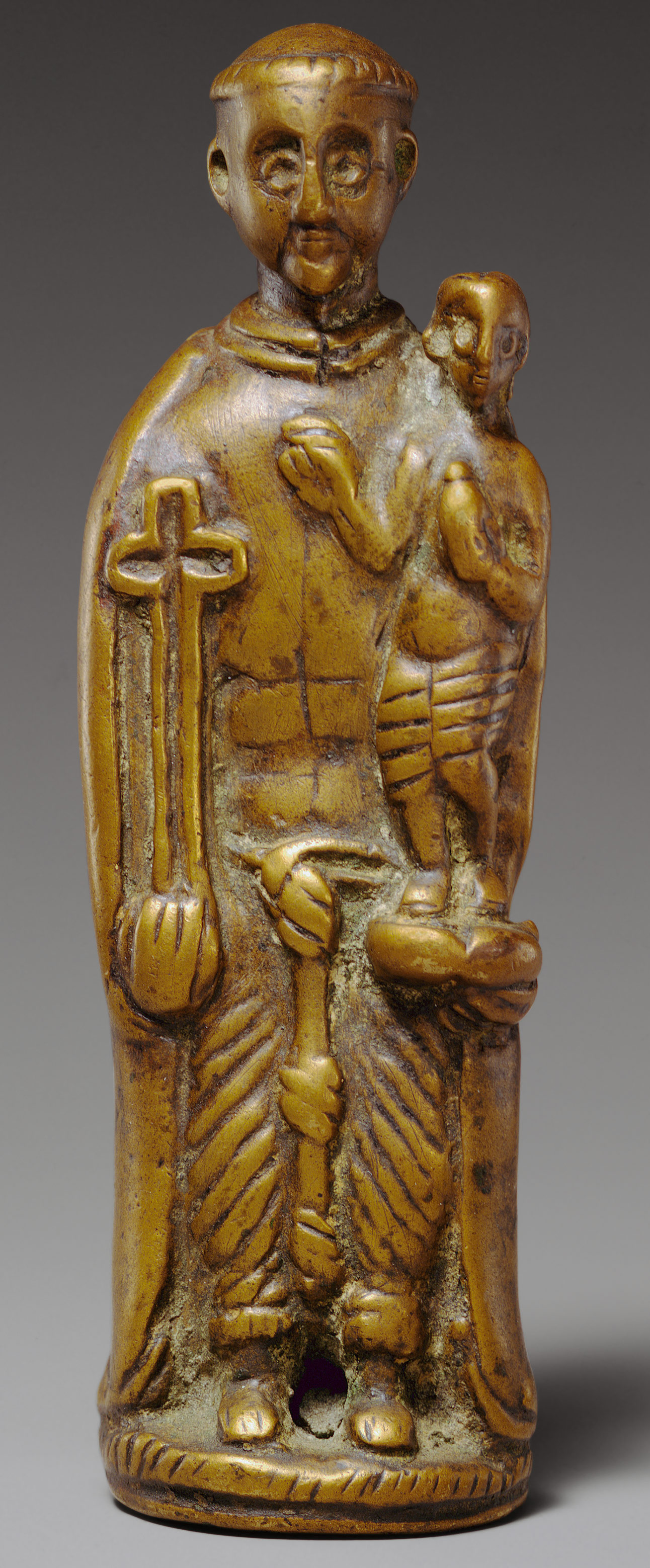 The Kongo kingdom, an immensely powerful state spanning parts of present-day Angola, Democratic Republic of Congo, Gabon, and the Congo Republic, adopted Christianity as its state religion in the fifteenth century. By the end of the seventeenth century, the kingdom had largely disintegrated in the face of devastating social and political upheavals. The resulting chaos bred a number of popular movements that looked to Christianity for a spiritual solution to the kingdom's problems. One of these movements, called Antonianism, was launched in 1704 by a Kongo visionary called Dona Beatriz, or Kimpa Vita. Dona Beatriz advocated a more thorough Africanization of the Catholic church and claimed that through direct contact with heaven she had observed the Holy Family to be Kongo. Ultimately found guilty of heresy by both the local nobility and the church, Dona Beatriz was burned at the stake. The primary emblem of this movement was Saint Anthony of Padua, a saint associated with the protection of children and mothers and conceived as the source of Kongo salvation. Known as Toni Malau, or "Anthony of Good Fortune," his image appeared on religious insignia kept by his followers for protection against ill health and other problems. This small pendant, cast from brass, depicts Saint Anthony with tonsured head wearing a monk's habit and knotted rope belt. He carries a cross in his right hand while in his left he supports an open book, upon which the Christ Child stands clutching a goldfinch foreshadowing the Crucifixion. www.metmuseum.org/toah/hd/kuba/hd_kuba.htm   This 1786 engraving gives an exact description of their clothing . . . their loincloth is made from 'macout' a local term meaning fabric made from straw. With the advent of trade with Europeans, the loincloth came to be made of various fabrics, including linen, cotton, silk, or even velvet. They are excessively decorated with red coral, the ultimate luxury . . . Rich people wear a long silver chain that fits low around their waist. But out of their apparel, the most important is a fur pelt with groups of small bells that they wear near their 'natural parts'; it is what they call their 'canda'. This means skin. This part of their clothing is their seal of honor" (pp. 70-72; our translation). wysinger.homestead.com/loango.html |
|
|
|
Post by anansi on Apr 19, 2010 1:45:05 GMT -5
Southern AfricaZimbabwe   Nalatale ruins different city Nalatale ruins different city .JPG) Khami ruinsThe thing we must remember is there are over 300 stone ruins of various size in Zimbabwe and surrounding areas, but it is Great Zimbabwe that got most of the press Khami ruinsThe thing we must remember is there are over 300 stone ruins of various size in Zimbabwe and surrounding areas, but it is Great Zimbabwe that got most of the pressThere have been many civilisations in Zimbabwe as is shown by the ancient stone structures at Khami, Great Zimbabwe and Dhlo-Dhlo. * The Mwene Mutapa (or Monomatapas) were the first major civilisation to become established. * By the mid 1440's, King Mutota's empire included almost all of the Rhodesian plateau and extensive parts of what is now Mozambique. * the wealth of this empire was based on small-scale industries, for example iron smelting, textiles, gold and copper, along with agriculture. * The regular inhabitants of the empire's trading towns were the Arab and Swahili merchants with whom trade was conducted. * In the early 16th century the Portuguese arrived and destroyed this trade and began a series of wars which left the empire so weakened that it entered the 17th century in serious decline. * Several Shona states came together to form the Rozwi empire which covered more than half of present day Zimbabwe. * By 1690 the Portuguese had been forced off the plateau and much of the land formerly under Mwene Mutapa was controlled by the Rozwi. * Peace and prosperity reigned over the next two centuries and the centres of Dhlo-Dhlo, Khami, and Great Zimbabwe reached their peaks. * As a result of the mid-19th century turmoil in Transvaal and Natal, the Rozwi Empire came to an end.      This vessel was field collected 18 years ago in Western Zambia and was only recently acquired from a well known local collection. Such pots were called Mulondo and sometimes Dondo. The long neck not only served as a funnel when pouring water, but also caused the contents to constantly cool by means of evaporation. Painted objects in this rural area were considered status symbols. This vessel was field collected 18 years ago in Western Zambia and was only recently acquired from a well known local collection. Such pots were called Mulondo and sometimes Dondo. The long neck not only served as a funnel when pouring water, but also caused the contents to constantly cool by means of evaporation. Painted objects in this rural area were considered status symbols.  Zulu Homes Zulu Homes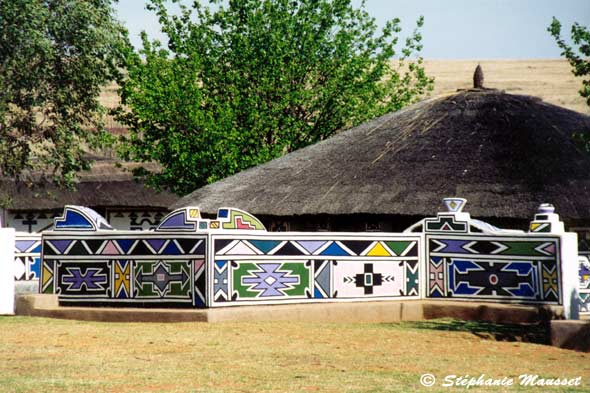   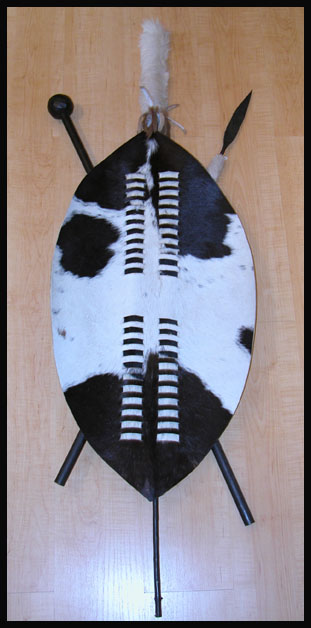  Zulu shield and spears Ndebele homes Zulu shield and spears Ndebele homes  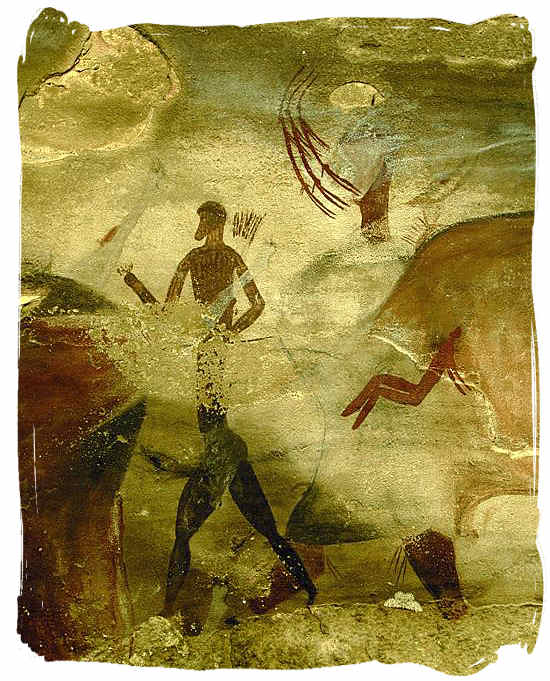 Khoi-San rock paintings Khoi-San rock paintings    MapungubweHill      MapungubweHill MapungubweHill
|
|
|
|
Post by anansi on Apr 21, 2010 5:43:30 GMT -5
The SwahiliKilwa History The earliest substantial occupation at Kilwa Kisiwani dates to AD 800, and the city became a major trade center from the 1100s to the early 1500s. The site was important during the Shirazi dynasty of the 11th and 12th centuries AD, and under the rule of Ali al-Hasan, a Great Mosque was built, and trade connections to southern Africa and the near and far east were established. Kilwa Kisiwani was one of the principal ports of trade on the Indian Ocean, trading gold, ivory, iron and coconuts from southern Africa, including the Mwene Mutabe south of the Zambezi River, for cloth and jewelry from India, and porcelain from China. The first gold coins struck south of the Sahara after the decline at Aksum were minted at Kilwa Kisiwani, presumably for facilitating international trade. One of them was found at the Mwene Mutabe site of Great Zimbabwe. Kilwa and Ibn Battuta The famous Moroccan trader Ibn Battuta visited Kilwa in 1331 during the Mahdali dynasty, when he stayed at the court of al-Hasan ibn Sulaiman Abu'l-Mawahib [ruled 1310-1333]. It was during this period that the major architectural constructions were made, including elaborations of the Great Mosque and the construction of the market complexes of Husuni Kubwa and Husuni Ndogo.  Gedi ruins: The ruins are the remains of a town located in Gede, a village near the coastal town of Malindi in Kenya. It is suggested that between the 13th and 14th to 17th centuries, Gedi was a thriving community along coastal Kenya. Although no written record exists of this town, excavations made between 1948 and 1958 have revealed that the inhabitants of Gedi traded with people from all over the world. “The artifacts that were found in the ruins, such as Chinese porcelain and Venetian glass, indicate that Gedi was a wealthy city that traded with Portugal, Italy, China, India and the Arab world” (Mombasa Kenya coast: Gedi ruins, http://www.articlebase.com). The ruins have a mosque, a palace, and large stone houses. The city’s streets were laid out at right angles and had drainage gutters. It is assumed that the village was abandoned in early 16th century. The ruins were declared a Historical monument in 1948.  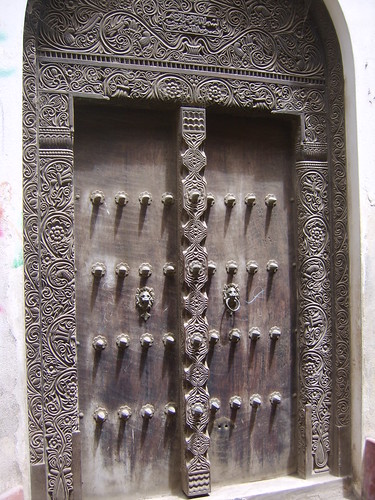 Lamu Lamu     Kilwa Ruins , Husuni Kubwa , 14th century Sultans palace , Kilwa Kisiwani Kilwa Ruins , Husuni Kubwa , 14th century Sultans palace , Kilwa Kisiwani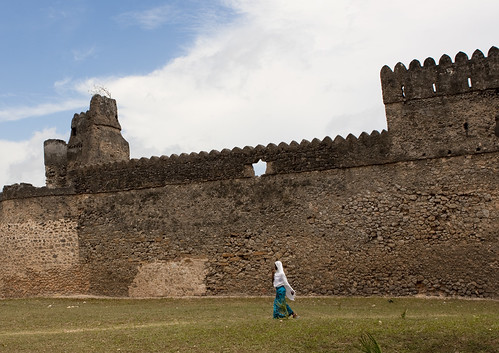 Gerezani fort in Kilwa Kisiwani,Tanzania Gerezani fort in Kilwa Kisiwani,Tanzania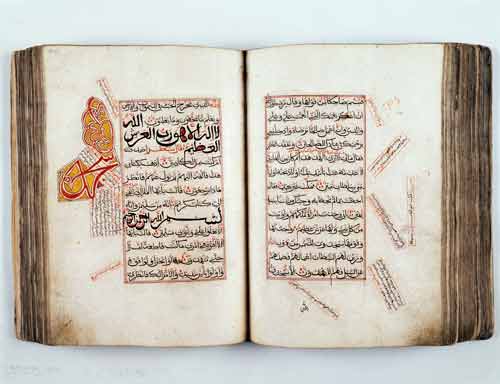 Swahili script Swahili script  The real Sinbad probably sailed on one of these and probably came from here. The real Sinbad probably sailed on one of these and probably came from here.
|
|
|
|
Post by anansi on Apr 27, 2010 8:52:11 GMT -5
Mighty AxumThe Aksumites were a people formed from the mix of Kushitic speaking people in Ethiopia and Semitic speaking people in southern Arabia who settled the territory across the Red Sea around 500 BC. The Aksumites lived in the Ethiopian highlands near the Red Sea, and so enjoyed a strategic position in the trade routes between Yemen (in the south of the Arabian peninsula) and the cities of Nubia. They spoke a strongly Semitic language and wrote in Semitic characters; Ethiopia, in fact, has one of the longest continuous literate traditions in Africa.
We know very little about the early Axumite kingdom. Roman and Greek sources indicate that an Axumite kingdom was thriving in the first century AD; the city of Adulis is frequently mentioned because it had become one of the most important port cities in Africa.
Aksum lay dead in the path of the growing commercial trade routes between Africa, Arabia, and India. As a result, it became fabulously wealthy and its major cities, Adulis, Aksum, and Matara, became three of the most important cosmopolitan centers in the ancient world. Although they were off the beaten path as far as European history is concerned, they were just as cosmopolitan and culturally important in that they served as a crossroads to a variety of cultures: Egyptian, Sudanic, Arabic, Middle Eastern, and Indian. Perhaps an indication of this cosmopolitan character can be found in the fact that the major Aksumite cities had Jewish, Nubian, Christian, and even Buddhist minorities.
In the second century AD, Aksum acquired tribute states on the Arabian Peninsula across the Red Sea, conquered northern Ethiopia, and then finally conquered Kush. The downfall of the Nubian powers led to the meteoric rise of Aksumite imperial power. The Aksumites controlled one of the most important trade routes in the world and occupied one of the most fertile regions in the world.
The Aksumite religion was actually derived from Arabic religion. It was a polytheistic religion which believed that the gods controlled the natural forces of the universe. However, in the fourth century, Ezana, who was a folllower of Axumite religion, converted to Christianity under the tutelage of a Syrian bishop named Frumentius. Ezana declared Axum to be a Christian state , thus making it the first Christian state in the history of the world, and began actively converting the population to Christianity.
Ethiopian Christianity was slightly different from its Greek origins. Under the influence of Egyptian Christians, the Axumites believed that Christ had a single rather than a double nature (man and god): this is called Monophysite (mono=single, physis=nature) Christianity and was considered heretical in the European churches. In the fifth century AD, the Axumites replaced Greek in the liturgy and began using their own native language, Ge'ez. Finally, because of their Semitic origins, the Ethiopians believed that they were descendants of the Hebrews, who were also Semitic. They traced their origins all the way back to David. So the Ethiopians, unlike other Christians, really saw themselves as inheriting the covenants that Yahweh entered into with his chosen people (as a side note, the Ethiopic Church claims to have the Ark of the Covenant which is the chest in which the Decalogue was kept by the Hebrews).
Axum remained a strong empire and trading power until the rise of Islam in the seventh century AD. However, because the Axumites had sheltered Muhammed's first followers, the Muslims never attempted to overthrow Axum as they spread across the face of Africa. Even though Axum no longer served as a center or hub of international trade, it nonetheless enjoyed good relations with all of its Muslim neighbors. Two Christian states north of Axum, Maqurra and Alwa, survived until the thirteenth century when they were finally forced by Muslim migration to become Islamic. Axum, however, remained untouched by the Islamic movements across Africa. Because of this, the Ethiopic (or Abyssinian) Church has lasted until the present day. It is still a Monophysite church and its scriptures and liturgy are still in Ge'ez.Richard Hooker www.wsu.edu/~dee/CIVAFRCA/AXUM.HTM  These obelisks, also called stelae, are known to be the tallest single pieces of stone ever quarried and erected in the ancient world. Their age and use is a complete mystery. Some scholars, extrapolating from ancient coins found at the base of the giant pillars, suggest that they may have been carved and erected around the beginning of the 4th century AD. Due to their proximity to nearby tombs, the obelisks may possibly have been used as memorials to deceased kings and queens, but this is only a speculation. The tallest of the monoliths, now fallen and broken into six massive pieces, was 33.3 meters tall and weighed an estimated five tons (the largest Egyptian obelisk is that of King Tutmosis, 32.16 meters high and now standing in Rome). The tallest obelisk still standing at Axum today is 23 meters. Precisely carved upon its sides (and upon the sides of many other nearby stelae) are what seem to be representations of multiple storeys with floors between them. Each storey features several window-like carvings and, at the base of the obelisks, what appear to be false doors complete with knockers and locks. www.sacredsites.com/africa/ethiopia/sacred_si These obelisks, also called stelae, are known to be the tallest single pieces of stone ever quarried and erected in the ancient world. Their age and use is a complete mystery. Some scholars, extrapolating from ancient coins found at the base of the giant pillars, suggest that they may have been carved and erected around the beginning of the 4th century AD. Due to their proximity to nearby tombs, the obelisks may possibly have been used as memorials to deceased kings and queens, but this is only a speculation. The tallest of the monoliths, now fallen and broken into six massive pieces, was 33.3 meters tall and weighed an estimated five tons (the largest Egyptian obelisk is that of King Tutmosis, 32.16 meters high and now standing in Rome). The tallest obelisk still standing at Axum today is 23 meters. Precisely carved upon its sides (and upon the sides of many other nearby stelae) are what seem to be representations of multiple storeys with floors between them. Each storey features several window-like carvings and, at the base of the obelisks, what appear to be false doors complete with knockers and locks. www.sacredsites.com/africa/ethiopia/sacred_si... 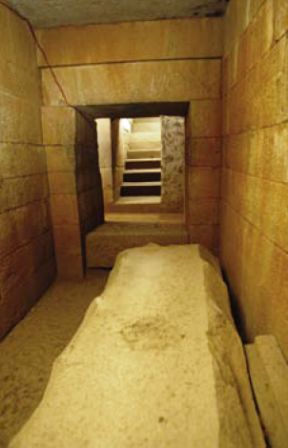 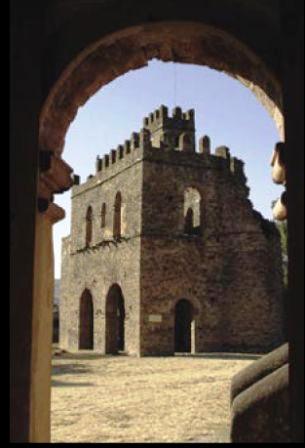 Axumite tomb and Fasiledes's Castle Axumite tomb and Fasiledes's Castle 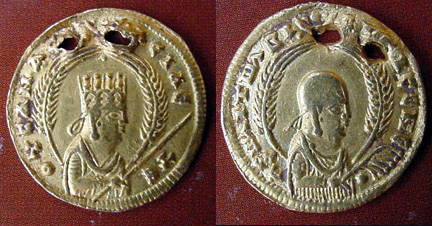 Gold coin of pre-Christian king Ousanas (about AD 320) diameter 17 mm Gold coin of pre-Christian king Ousanas (about AD 320) diameter 17 mm Gold coin of king Ezanas after conversion to Christianity (mid 4th century AD) diameter 15 mm.www.anglo-ethiopian.org/publications/articles.php?type=L&reference=publications/articles/2007summer/axumitecoins.php Gold coin of king Ezanas after conversion to Christianity (mid 4th century AD) diameter 15 mm.www.anglo-ethiopian.org/publications/articles.php?type=L&reference=publications/articles/2007summer/axumitecoins.php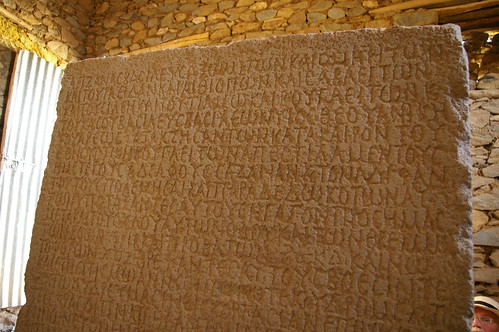 Ezana stone - written in Sabaean, Ge'ez and Ancient Greek (similar to Rosetta stone) www.flickr.com/photos/nicky_l/2338270849/ Ezana stone - written in Sabaean, Ge'ez and Ancient Greek (similar to Rosetta stone) www.flickr.com/photos/nicky_l/2338270849/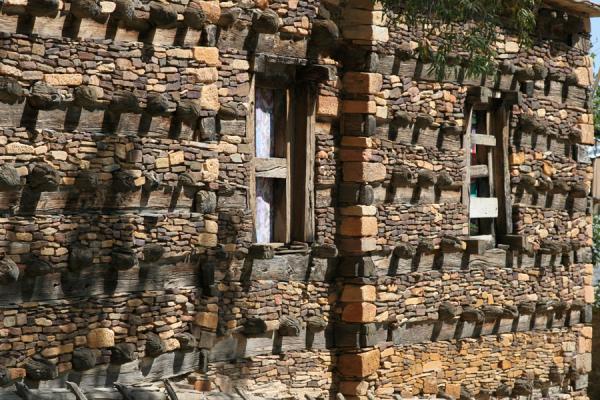 Debre Damo Monestery Debre Damo Monestery The most sacred shrine in Ethiopia is the 17th-century Church of St. Mary of Zion in Axum, which stands next door to the chapel housing the Ark of the Covenant. Nearby is a newer and larger church, also called St. Mary of Zion. The most sacred shrine in Ethiopia is the 17th-century Church of St. Mary of Zion in Axum, which stands next door to the chapel housing the Ark of the Covenant. Nearby is a newer and larger church, also called St. Mary of Zion.: www.sacred-destinations.com/ethiopia/axum-chu. 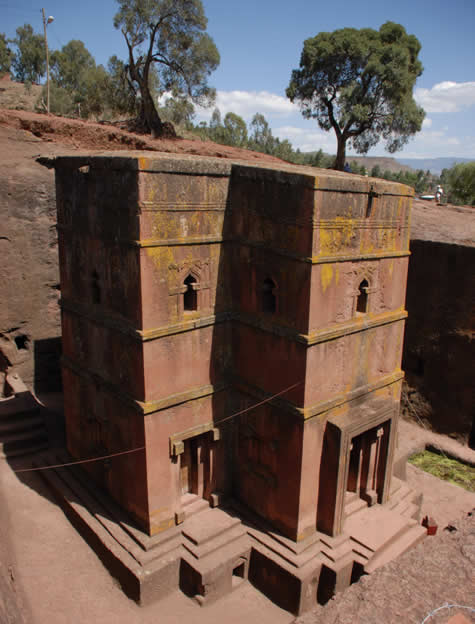 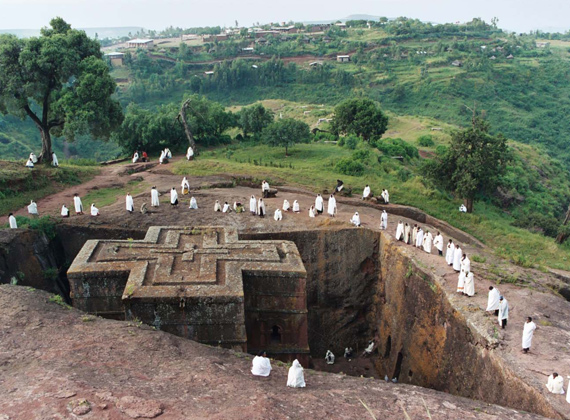 Lalibela Rock sculpted churches Lalibela Rock sculpted churches  Axumite Head; Falasha Artist Terracotta, 4th to 7th Centurywww.theancientweb.com/explore/content.aspx?co Axumite Head; Falasha Artist Terracotta, 4th to 7th Centurywww.theancientweb.com/explore/content.aspx?co.. 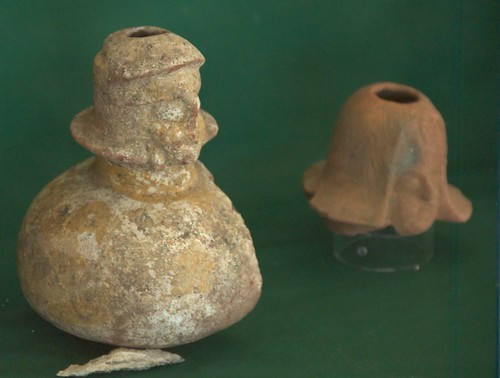 Axumite jar Axumite jar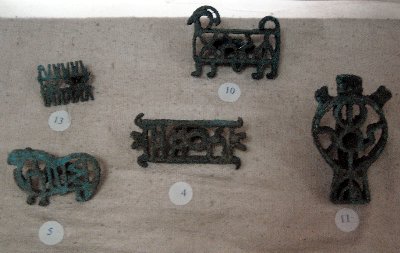 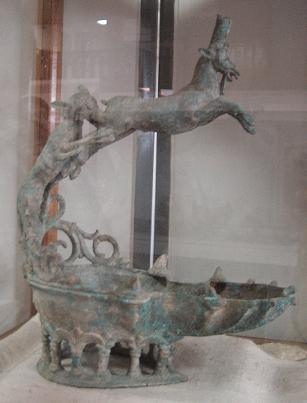 Oil Lamp Oil Lamp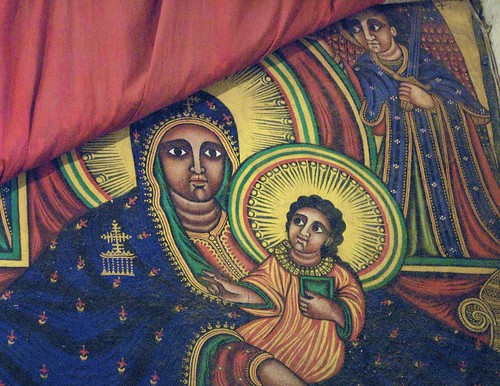 Modonna and Child Modonna and Child The Devil, the dragon and the lower halves of St. George and his horse. The Devil, the dragon and the lower halves of St. George and his horse. 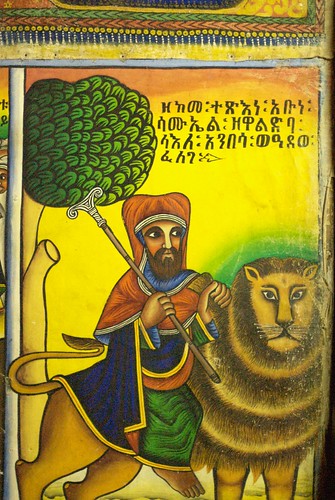 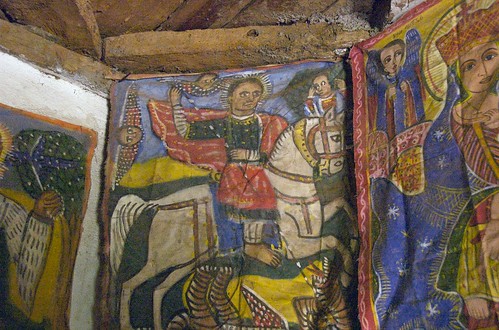  This ancient object is also in the Iqa-bet, next to the Church of Abba Afse in Yeha, Tigray Region, northern Ethiopia. This ancient object is also in the Iqa-bet, next to the Church of Abba Afse in Yeha, Tigray Region, northern Ethiopia.       Star Of David remember they also had a huge Jewish population Star Of David remember they also had a huge Jewish population Solomon and Sheba or Makeda Solomon and Sheba or Makeda Traditional round church Traditional round church
|
|
|
|
Post by anansi on Jul 13, 2010 21:09:43 GMT -5
Hello Anansi, You're confusing Dahomey (modern Benin Republic), and Ancient Benin (modern Benin City). Those palaces as well as Gezo and the amazons were from Dahomey and unrelated to Obas. Thanks Arara Sabalu I replace the name Benin city with the original name Igodomigodo And yes it is very easy to confuse or lump the two together after all everyone in mass media does. There are indeed layers of people to peel back The Aja Gezo's people, the Fon (Dahomeans) the the Yoruba who produced the obas, all covering or dominating the same area ,please feel free to to add, correct and expend the thread..  |
|
|
|
Post by anansi on Jul 14, 2010 19:24:54 GMT -5
 What do they mean by house of erection? is that like a whore house? or a harem? What do they mean by house of erection? is that like a whore house? or a harem?Thanks great pics. |
|
|
|
Post by egyptianplanet on Jul 14, 2010 20:32:03 GMT -5
 Okay, I'll bite, what's with the swastika symbol? I know the Swastika symbol was a Greco-Egyptian symbol of peace but what's it doing in Ghana? |
|


















































































































.JPG)














 MapungubweHill
MapungubweHill










































